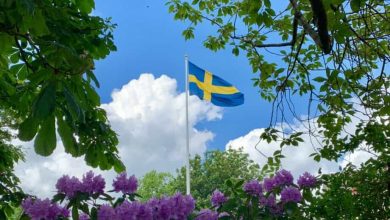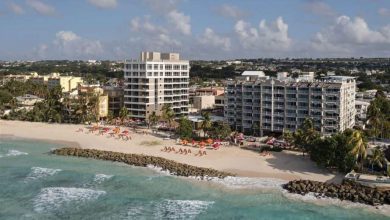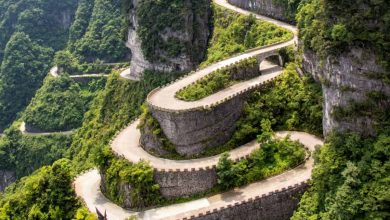Things to do and travel tips for 2024

Diplomat.Today
Best time to visit
The best time to visit Florence is between May and September. I recommend not to visit Florence in July and August due to the large influx of tourists, high accommodation prices and sweltering temperatures. The months of May, June and September are great because you can enjoy great weather with lower prices and fewer visitors.
Be able to: May is a nice transitional time in Florence in terms of weather conditions. Visitors can enjoy cool mornings and evenings and warm afternoons. Trofeo Marzocco, or the Flag Throwing Competition, kicks off the month of May every May 1st in Florence. This event takes place in Piazza della Signoria and includes a parade and other free activities. The Giardino dell’Iris, or Iris Garden, is also in full bloom in May. The iris is one of the most important symbols of the city.
June: June marks the kick-off of summer, with a lot of fun and interesting events held throughout the city. June events in Tuscany include medieval fairs, food festivals, music festivals and much more. It’s certainly quite warm at this time of year, but not nearly as busy as July and August.
July and August (high season): I would avoid July and August, but failing that you won’t be disappointed with the warm weather and endless things to see and do. It is not without reason that this is the high season for tourists. Book all your tickets in advance, otherwise you risk standing in extra long lines. I also recommend looking at the best restaurants in Florence and making reservations for the ones you definitely don’t want to miss.
September: September is my favorite time to visit Florence and the Tuscan region. The weather is cooling down, but during the day it is still nice and warm and there are fewer tourists. This is also a good time to take day trips to popular tourist destinations such as San Gimignano, Pisa and Saturnia.
How to get around
I like to rent a car at most destinations so I can travel and explore on my own time. However, Florence is one of the few places I wouldn’t rent a car. The city center is very car-free and many roads are reserved for local traffic, so you can get a fine if you take the wrong street (yes, I know that from experience).
Instead, Florence is best explored on foot. The city is small and most of the top attractions can be found in the city center. The only place you might want to take a taxi or Uber is Piazzale Michelangelo; it is located on a hill and not in the city center.
Additionally, I highly recommend that you build in some time to visit other fantastic places in Tuscany. You can find the best gelato in San Gimignano, relax in the natural hot springs of Saturnia or see the world-famous Leaning Tower of Pisa. These places can be accessed via guided tours or Italy’s robust train system.
Cultural heritage
At the heart of Florence’s cultural heritage is its art. The city was home to some of the greatest artists of the Renaissance, including Leonardo da Vinci, Michelangelo and Botticelli. Their masterpieces adorn the walls of museums and churches throughout the city, with iconic works such as Michelangelo’s David and Botticelli’s Birth of Venus attracting millions of visitors every year.
Florence’s architectural heritage is equally impressive. The cityscape is dominated by the beautiful Duomo, or Cathedral of Santa Maria del Fiore, with its iconic red-tiled dome designed by Filippo Brunelleschi. The nearby Palazzo Vecchio is a testament to the city’s political and cultural power during the Renaissance, while the Ponte Vecchio, with its rows of shops lining the medieval arches, is a symbol of Florence’s commercial might.
In addition to its art and architecture, Florence’s cultural heritage also extends to its traditions and cuisine. The city is known for its Tuscan cuisine, which emphasizes fresh, locally sourced ingredients and simple yet flavorful dishes. Visitors can enjoy traditional Tuscan specialties such as ribollita, a hearty vegetable soup, and bistecca alla Fiorentina, a thick and delicious grilled T-bone steak.
Other influential Italian artists, philosophers and creatives who came from Florence include Galileo, Dante, Machiavelli, Vespucci and Donatello. The Medici family, one of the most powerful Italian families, also came from Florence. Their former residence, Pitti Palace, now serves as an incredible Renaissance museum.
Local customs and etiquette
Label: Throughout Italy it is common to say ‘Buongiorno’ or ‘Buona sera’ when entering a shop or restaurant. Haggling is not common in Florence, not even in the open-air markets. Some suppliers may be open to it, but generally it’s best not to negotiate.
Late dinner: Italians generally eat later than Americans. It’s common for restaurants to close between lunch and dinner or have a limited menu, so don’t expect to eat until after 7 p.m. For this reason, I always like to pick up some snacks from the local supermarket. However, it is becoming increasingly common to find restaurants that are open non-stop.
Local food and wine: You should definitely take advantage of your stay in Florence by indulging in the amazing local cuisine and wine. On almost every street corner you will find a great wine bar with wine from the nearby Chianti region. For a unique experience, keep an eye on Florence’s elusive sights buchette del vino or wine frames! Get wine served through an old stone window, just like 400 years ago! Many of these wine windows can be found in the Santo Spirito district and the city center.
Dress: Pack your very best outfits for a trip to Florence! Florence is a stylish city, and Italians care about how they dress and how they present themselves. This is not a beach destination, so leave the flip flops and beachwear for other destinations. Instead, opt for timeless pieces and remember to dress modestly when visiting churches.
Language: Although many in Florence, especially those who work in the hospitality sector, speak English, it is still important to learn a few phrases. Learning expressions like “Buongiorno” (hello), “Buona sera” (good evening) and “Grazie” (thank you) not only facilitates conversation, but also shows respect for the local language. Don’t assume that everyone you speak to understands English.
Neighborhoods
Duomo (Santa Maria dei flowers) – This district of the old town (a UNESCO World Heritage Site) is certainly the most visited part of Florence. Florence’s iconic cathedral is a striking landmark and anchors this part of the city. North of this cathedral you will find Cappelle Medicee, located in Piazza di Madonna Degli Aldobrandini, the tomb of the Medici family and home to some incredible works of art. Wherever you stay in Florence, you will definitely pass by this part of Florence at some point.
- Attractions: Florence Cathedral, Piazza del Duomo, Palazzo Vecchio, Piazza della Repubblica, Cappelle Medicee
- Accommodations: This is the best place to stay for first time visitors. It is centrally located and is home to many of the city’s top attractions. Hotels can be expensive during peak season, but vacation rentals are reasonably priced.
Arno River and Santo Spirito – The picturesque banks of the Arno River are wonderful to stroll around and admire the city’s beautiful architecture. You’ll find famous museums and boutique art galleries here, including the Uffizi Gallery and Pitti Palace. The Uffizi Gallery has the largest collection of the best Renaissance art, but the Pitti Palace isn’t too shabby either. If you want to get away from the museums, enjoy the beauty of nature in the Boboli Gardens or go shopping along the ancient Ponte Vecchio.
- Attractions: Uffizi Gallery, Ponte Vecchio, Boboli Gardens, Pitti Palace, Basilica di Santo Spirito
- Accommodations: Luxury travelers will enjoy the hotel options near the Arno River, including the Westin and St. Regis. I recommend enjoying a drink at the Westin’s rooftop bar so you can take in the breathtaking views of the city.
San Marco and Santissima Annunziata – Located on the north side of the historic center of Florence, this neighborhood is characterized by its amazing architecture, two large churches and the University of Florence. It has a bit of a lively university atmosphere, but there are also many beautiful, quiet streets.
- Attractions: Galleria dell’Accademia, Piazza San Marco, Ospedale degli Innocenti, Fondazione Scienza en Tecnica
- Accommodations: This neighborhood has a good mix of accommodations for every budget. From the Four Seasons hotel to great vacation rentals, you can’t go wrong staying in the San Marco and Santissima Annunziata neighborhoods.
Santa Croce – If you’re looking for the most incredible nightlife in Florence, look no further than Santa Croce. Located on the east side of the historic center, the Santa Croce district. In addition to its great bars and restaurants, Santa Croce is known for its stunning architecture. Piazza di Santa Croce is one of the most beautiful squares in the city and a great place to sit at a café and people watch. Many of the buildings in Santa Croce date from the 15th and 16th centuries.
- Attractions: Piazza di Santa Croce, Basilica of Santa Croce di Firenze, Mercato di Sant’Ambrogio, Casa Buonarroti
- Accommodations: Hotels and vacation rentals in Santa Croce range from mid-range to luxury. Stay here if you want to be within walking distance of Florence’s best bars.



